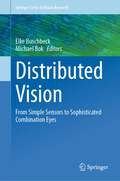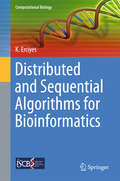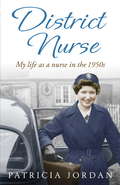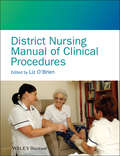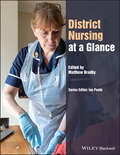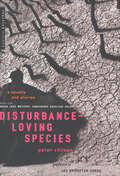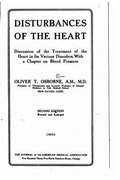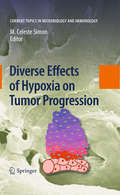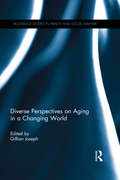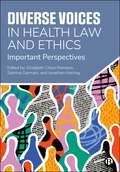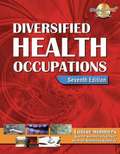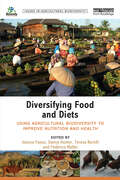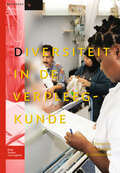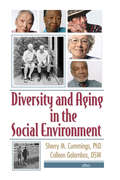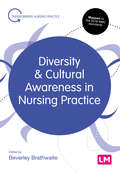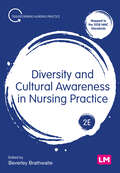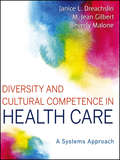- Table View
- List View
Distributed Vision: From Simple Sensors to Sophisticated Combination Eyes (Springer Series in Vision Research)
by Elke Buschbeck Michael BokThis volume explores the diversity of distributed eyes and other unusual visual systems in nature. It compares the unique themes of optics, neural processing, and behavioral control that emerge from these visual systems with more-canonical eyes. This volume attempts to answer a number of questions about distributed visual systems. What are distributed visual systems good for, how do they function, and why have they arisen independently in so many phyla? Why are eye designs and visual system arrangements much more diverse in invertebrates? Each chapter includes an overview of the visual systems that exist in their group of animals, relates vision to ecology, and takes a comparative approach.
Distributed and Sequential Algorithms for Bioinformatics
by K. ErciyesThis unique textbook/reference presents unified coverage of bioinformatics topics relating to both biological sequences and biological networks, providing an in-depth analysis of cutting-edge distributed algorithms, as well as of relevant sequential algorithms. In addition to introducing the latest algorithms in this area, more than fifteen new distributed algorithms are also proposed. Topics and features: reviews a range of open challenges in biological sequences and networks; describes in detail both sequential and parallel/distributed algorithms for each problem; suggests approaches for distributed algorithms as possible extensions to sequential algorithms, when the distributed algorithms for the topic are scarce; proposes a number of new distributed algorithms in each chapter, to serve as potential starting points for further research; concludes each chapter with self-test exercises, a summary of the key points, a comparison of the algorithms described, and a literature review.
District Laboratory Practice in Tropical Countries
by Monica CheesbroughThis new edition includes an update on HIV disease/AIDS, recently developed HIV rapid tests to diagnose HIV infection and screen donor blood, and current information on antiretroviral drugs and the laboratory monitoring of antiretroviral therapy. Information on the epidemiology and laboratory investigation of other pathogens has also been brought up to date. Several new, rapid, simple to perform immunochromatographic tests to assist in the diagnosis of infectious diseases are described, including those for brucellosis, cholera, dengue, leptospirosis, syphilis and hepatitis. Recently developed lgM antibody tests to investigate typhoid fever are also described. The new classification of salmonellae has been introduced. Details of manufacturers and suppliers now include website information and e-mail addresses. The haematology and blood transfusion chapters have been updated, including a review of haemoglobin measurement methods in consideration of the high prevalence of anaemia in developing countries.
District Nurse
by Patricia JordanIn the bestselling tradition of Call the Midwife, an honest and moving account of working as a district nurse in 1950s England.Born in Belfast, Patricia Jordan left for England to train as a nurse in the 1940s and DISTRICT NURSE is her moving and humorous account of life as a visiting nurse in a small English town. She leaves behind a close-knit family and a failed romance in Ireland to begin training in Barnet and Middlesex. She early on treats a patient who eventually becomes her husband and means that she accepts a job in the north of England that takes her first by bicycle and then in an unreliable little car, into the homes of the people who need her care.In DISTRICT NURSE, she brings to life everyone she encounters, from the doctors and other nurses to the diverse and always compelling patients. It is a captivating personal account of a life spent helping others.
District Nurse
by Patricia JordanIn the bestselling tradition of Call the Midwife, an honest and moving account of working as a district nurse in 1950s England.Born in Belfast, Patricia Jordan left for England to train as a nurse in the 1940s and DISTRICT NURSE is her moving and humorous account of life as a visiting nurse in a small English town. She leaves behind a close-knit family and a failed romance in Ireland to begin training in Barnet and Middlesex. She early on treats a patient who eventually becomes her husband and means that she accepts a job in the north of England that takes her first by bicycle and then in an unreliable little car, into the homes of the people who need her care.In DISTRICT NURSE, she brings to life everyone she encounters, from the doctors and other nurses to the diverse and always compelling patients. It is a captivating personal account of a life spent helping others.
District Nursing Manual of Clinical Procedures
by Liz O'Brien"This manual, the first of its kind focused on district nursing, provides the means to build competence and confidence in nurses new to the community, or developing their skills. The comprehensive and evidence-based content provides essential information for competence in key areas of district nursing." --From the Foreword, by Rosemary Cook CBE, Hon D Lett, MSc, PG Dip, RGN Director, The Queen's Nursing InstituteClinical skills are a fundamental aspect of district nursing care. The District Nursing Manual of Clinical Procedures is a practical, evidence-based manual of clinical skills which reflects the unique challenges of district nursing care within the patient's home. It provides a comprehensive resource for all district nurses, community nurses, students and healthcare professionals involved in the district nursing team, enabling them to practice competently and confidently and deliver clinically effective, person-centred care.The District Nursing Manual of Clinical Procedures addresses the complexity of district nursing care and encompasses key aspects of clinical practice, including decision making in areas that district and community nurses often struggle with or find difficult when they are on their own in a patient's home. It utilises the latest clinical research and expert clinical knowledge to address these challenges, and to provide the underlying theory and evidence for district nursing care.Key featuresEvidence-based manual of practical clinical skills in district nursing careClear, user-friendly and easy to understandContains recommendations for expert care within a patient's own homeAddresses key concerns of district and community nurses working on their own within a patient's homeEncompasses key aspects of district nursing carePlaced in the context of person-centred careAll procedures include the rationale for each action - 'why' as well as 'how'
District Nursing at a Glance (At a Glance (Nursing and Healthcare))
by Matthew BradbyDistrict Nursing at a Glance is the perfect study and revision guide for students and qualified nurses alike, providing a concise yet thorough overview of community care and its implications for nursing practice. A new addition to the market-leading at a Glance series, this dynamic and highly visual resource covers a wide range of fundamental topics, from the historical and theoretical background of district nursing to practical information on prescribing, mental health, home assessment, pain management, end of life care, and much more. Beautifully illustrated throughout, this portable and accessible guide: Provides a clear picture of delivering care in a patient’s own home and addresses many contemporary and emerging aspects of practice Covers stroke, cancer, diabetes, epilepsy, chemotherapy, and other common diseases suffered by patients in the community setting Offers up-to-date information and advice on evidence-based practice, educational pathways, and career development Discusses the use of mobile technology to support professional practice of caring for patients in their homes Includes summary boxes, key points, full references, links to online resources, and recommendations for practice to improve the learning experience District Nursing at a Glance is a must-have revision guide and reference for pre-registration nursing students, particularly those in community clinical placements, post-registration students on district nursing courses, and newly qualified district nurses and healthcare assistants.
Distrust, Fear, and Science-Denial in Medicine and Healthcare
by Anthony Wrigley Markus WolfensbergerOver recent decades, the decline of trust, mounting of fears, and increasing denial of science appear as a marked shift of societal attitudes towards many institutions and professionals. This book analyses these developments and looks at their role in medicine and healthcare, both in terms of the patient-physician relationship and for delivering high-quality healthcare, in order to establish why we need trust and what can be done to restore it. The book begins by offering a conceptual analysis and definition of trust, using a ‘pattern definition’ based upon typical features and common usage of the term, as well as the related concepts of hope, fear, and belief. It charts evidence for the decline of public trust in various professions, and then looks at the causes, as well as the accompanying growth of fear and the rejection of science. The study addresses possible options for restoring trust in medicine and healthcare, be it in individual physicians, in hospitals, or in managed care institutions. Written jointly by a medical doctor and an academic specialising in biomedical ethics, the book will be of interest to those working in the areas of biomedical ethics and law, medicine and healthcare, public health, philosophy, sociology, politics, and psychology.
Disturbance-Loving Species: A Novella and Stories
by Peter ChilsonPeter Chilson’s fiction debut delivers a fascinating, heart-wrenching view of modern African culture, filtered through the lens of the West. In a novella and four short stories, Chilson, who traveled to Africa first as a Peace Corps volunteer and later as a freelance journalist, uses a phrase borrowed from biology to point out how our “disturbance-loving species” thrives in the most chaotic, seemingly unlivable situations. As this remarkable collection explores the experiences of Americans struggling to cope with the political and social upheaval of life in Africa and of Africans acclimating to life in the United States, Chilson captures in vivid detail the strange, exhilarating frisson between cultures.
Disturbances of the Heart / Discussion of the Treatment of the Heart in Its Various Disorders, With a Chapter on Blood Pressure
by Oliver T. OsborneDisturbances of the heart, discussion of the treatment of the heart in its various disorders, with a chapter on blood pressure by Oliver T. Osborne. This book is a reproduction of the original book published in 1916 and may have some imperfections such as marks or hand-written notes.
Disulfiram: Its Use in Alcohol Dependence and Other Disorders
by Avinash De SousaThis book focuses on the value of supervised Disulfiram therapy, highlighting the many potential and unique benefits of Disulfiram. One of the oldest drugs available for the long-term management of alcohol dependence, Disulfiram remains a viable treatment option for alcohol dependence and has been shown in recent studies to be more successful in treating patients with alcohol dependence than Naltrexone, Topiramate and Acamprosate. It is also useful in dual diagnosis patients and those with co-morbid cocaine and alcohol dependence. Although Disulfiram’s mechanism of action in alcohol dependence was long thought to be its effects as a psychological deterrent, more recent studies point to potential anti-craving effects as well. In dedicated chapters, the book reviews major clinical trials of Disulfiram spanning nearly 60 years, its historical aspects and discovery, side effects, treatment protocols and uses in the context of alcohol dependence. The book also discusses the use of Disulfiram across diverse populations along with monitoring for compliance and various adverse effects that may manifest. Further topics include Disulfiram implant therapy and the role of Disulfiram in the modern long-term pharmacotherapy of alcohol dependence, as well as the role of cognitive behavior therapy in enhancing the effects of Disulfiram and the emerging role of Disulfiram in treating cocaine dependence and pathological gambling. As such, the book offers a “one-stop” comprehensive guide to all aspects of Disulfiram therapy.
Diverse Effects of Hypoxia on Tumor Progression
by M. Celeste SimonHypoxia, defined as reduced oxygen tension, is a common physiological phenomenon in both normal embryonic development and malignancy progression. Although severe hypoxia is generally toxic for both normal tissue and tumors, neoplastic cells gradually adapt to prolonged hypoxia though additional genetic and genomic changes with a net result that hypoxia promotes tumor progression and therapeutic resistance. Hypoxia promotes cancer progression by regulating various aspects of cancer biology, including radiotherapy resistance, metabolism, angiogenesis and invasion/migration
Diverse Perspectives on Aging in a Changing World (Routledge Studies in Health and Social Welfare)
by Gillian JosephFocusing on under-researched aspects of social, economic and political change, this volume offers fresh insights into aging, older people and their families. It combines an international and interdisciplinary approach. Chapters explore the contexts in which family roles, institutional practices, public policies and social and cultural discourses evolve, connecting analyses of aging issues and policy development with sound research practices, as well as previously-ignored gaps in professional practice. Topics covered include politics and policy, health and social care, culture and migration, urban and rural sociology, gender studies, technology and economics. The book will be of particular interest to students and researchers in gerontology, community development, geography and population studies, along with researchers and professionals in physiotherapy, nursing and social work.
Diverse Voices in Health Law and Ethics: Important Perspectives (Diverse Voices)
by Elizabeth Chloe Romanis, Sabrina Germain, and Jonathan HerringIlluminating the often-overlooked perspectives of marginalised groups, this essential textbook offers a transformative exploration of health law and ethics. Designed as a replacement for (or complement to) foundational health law texts, the book amplifies the voices of those frequently silenced in teaching materials: racialised communities, ethnic minorities, women, disabled individuals, LGBTQI+ people and those disadvantaged by socio-economic and structural factors. Chapters cover key topics such as abortion, medical negligence, and public health, scrutinising how traditional legal narratives can neglect the nuanced impacts on these diverse groups. Contributors challenge readers to reflect on the production and perpetuation of health inequalities, enriching the curriculum with critical viewpoints. Teaching tools include: - accessible summaries throughout the chapters; - critical reflection questions at the end of each chapter for students and teachers; - further reading lists and links to external resources.. This is an invaluable text that encourages students and academics to engage deeply with the intersections of law, health(care) and social justice. It is an indispensable companion for any health law course, fostering a more inclusive and well-rounded approach to legal and medical education and practice.
Diversified Health Occupations
by Karen Simmers-Nartker Louise Simmers Sharon Simmers-KobelakNew edition of a text in which Simmers, M.Ed., R.N. provides basic entry-level knowledge and skills required for a variety of health occupations. Part 1 covers basic concepts such as health care systems, careers, personal qualities of a health care worker, legal and ethical responsibilities, medical terminology, anatomy and physiology, human growth and development, cultural diversity, geriatric care, nutrition and diets, computers, promotion of safety, infection control, vital signs, first aid, and preparing for the world of work. Part 2 discusses skills needed by various kinds of assistants including dental, laboratory, medical, nursing, physical therapy, and business and accounting. Annotation c. Book News, Inc., Portland, OR (booknews.com)
Diversified Health Occupations
by Karen Simmers-Nartker Louise Simmers Sharon Simmers-KobelakNew edition of a text in which Simmers, M. Ed. , R. N. provides basic entry-level knowledge and skills required for a variety of health occupations. Part 1 covers basic concepts such as health care systems, careers, personal qualities of a health care worker, legal and ethical responsibilities, medical terminology, anatomy and physiology, human growth and development, cultural diversity, geriatric care, nutrition and diets, computers, promotion of safety, infection control, vital signs, first aid, and preparing for the world of work. Part 2 discusses skills needed by various kinds of assistants including dental, laboratory, medical, nursing, physical therapy, and business and accounting. Annotation c. Book News, Inc. , Portland, OR (booknews. com)
Diversified Health Occupations
by Louise M. SimmersThis textbook provides students with the core knowledge and skills required for entry-level positions in a variety of health occupations. In addition to the core knowledge, it offers extensive subject matter on selected professions such as dental, medical and nurse assistants, as well as an overview of the many health-related careers that students might choose. An accompanying workbook allows students to apply knowledge and skills through assignment sheets and step-by-step procedures. All necessary materials for instruction and evaluation are provided in a Teacher's Resource Kit.
Diversifying Food and Diets: Using Agricultural Biodiversity to Improve Nutrition and Health (Issues in Agricultural Biodiversity)
by Danny Hunter Federico Mattei Jessica Fanzo Teresa BorelliCurrently 868 million people are undernourished and 195 million children under five years of age are stunted. At the same time, over 1 billion people are overweight and obese in both the developed and developing world. Diseases previously associated with affluence, such as cancer, diabetes and cardio-vascular disease, are on the rise. Food system-based approaches to addressing these problems that could enhance food availability and diet quality through local production and agricultural biodiversity often fall outside the traditional scope of nutrition, and have been under-researched. As a consequence, there remains insufficient evidence to support well-defined, scalable agricultural biodiversity interventions that can be linked to improvements in nutrition outcomes. Agricultural biodiversity is important for food and nutritional security, as a safeguard against hunger, a source of nutrients for improved dietary diversity and quality, and strengthening local food systems and environmental sustainability. This book explores the current state of knowledge on the role of agricultural biodiversity in improving diets, nutrition and food security. Using examples and case studies from around the globe, the book explores current strategies for improving nutrition and diets and identifies key research and implementation gaps that need to be addressed to successfully promote the better use of agricultural biodiversity for rural and urban populations and societies in transition.
Diversiteit in de verpleegkunde
by P. Esterhuizen A.U. Kuckert-PanderVerpleegkundigen staan dicht bij mensen. Inlevingsvermogen en mensenkennis zijn onmisbaar voor goede observaties, klinisch redeneren of voor het kunnen geven van steun. Hoe herken je als verpleegkundige diversiteit en hoe geef je dat een goede plek in je handelen? Dit boek maakt de complexiteit van het onderwerp ‘diversiteit’ zichtbaar en biedt tegelijkertijd handvatten. Het boek laat zien hoe belangrijk de dialoog met patiënten is en hoe een verpleegkundige kennis over groepskenmerken kan combineren met het oog hebben voor unieke eigenschappen. Op het eerste oog homogene groepen patiënten kunnen veel diversiteit bevatten. De auteurs benaderen het onderwerp ‘diversiteit’ vanuit verschillende perspectieven. De complexiteit van het onderwerp wordt hierdoor goed zichtbaar. Dat diversiteit centraal staat in dit boek is niet alleen te zien aan de titel, maar ook aan de diversiteit in de opbouw van hoofdstukken. Elk hoofdstuk kan op zichzelf gelezen worden. Drie hoofdstukken zijn in de Engelse taal geschreven. Niet alleen de opbouw en de taal van de hoofdstukken is divers, maar ook de auteurs zelf verschillen in leeftijd, geslacht, gezinssituatie, opleiding (verpleegkunde, culturele antropologie, sociologie, etc.) en woonplaats (Nederland, Duitsland, Groot-Brittannië, Amerika).
Diversity and Aging in the Social Environment
by Sherry M. Cummings Colleen GalambosToday, nearly one of every eight Americans is 65 or older, and by 2030, over 20% of the population will be in this age group. Are you prepared to work with this vastly diverse-and rapidly growing-population?This single source is designed to help social service professionals provide effective services to America&’s vastly diverse and rapidly growing elderly population. Diversity and Aging in the Social Environment explores the impact of race/ethnicity, gender, sexual orientation, and geographic location on elders&’ strengths, challenges, needs, and resources to provide you with a more complete understanding of the issues elders face. In order to be more responsive to older adults, social workers and other human service professionals need to enhance their knowledge of the aging population and the factors that impact the way seniors interact with society, organizations, community resources, neighborhoods, support networks, kinship groups, family, and friends. Diversity and Aging in the Social Environment examines differences in race, ethnicity, geographical location, sexual orientation, religion, and health status to help current and future human service professionals provide culturally competent services to the diverse range of elderly people they serve. In addition, it addresses the wide disparity that exists for older Americans in terms of income and assets, number of chronic conditions, functional and cognitive impairment, housing arrangements, and access to health care. This book provides a context for the examination of diversity issues among older adults by describing and discussing several theoretical perspectives on aging that highlight important aspects of diversity. Next, you&’ll find thoughtful examinations of: issues and challenges faced by lesbian, gay, bisexual, and transgender elders-and the strengths they bring into later life the impact of gender, race, and sexual orientation on prevalence rates, risk factors, methods of disease contraction, and mortality rates among older adults with HIV/AIDS-along with a discussion of the psychosocial issues they face diverse characteristics of custodial grandparents-and the influence of the caregivers&’ gender, race, age, and geographic location on methods of care and available caregiver support differences in caregiver characteristics, service utilization, caregiver strain, and coping mechanisms among several racial/ethnic groups of adults who care for elderly, disabled, and ill persons cultural/religious factors that influence interactions between health care personnel and Japanese-American elders the relationship between acculturation and depressive symptoms among Mexican-American couples life challenges facing Jewish and African-American elders-with a look at each group&’s coping mechanisms differences in religious/spiritual coping skills among Native American, African-American, and white elders psychological well-being and religiosity among a diverse group of rural elders
Diversity and Cultural Awareness in Nursing Practice (Transforming Nursing Practice Series)
by Beverley BrathwaiteAs a nurse responsible for providing person-centred care it is vital that you understand how culture and diversity affect patients&’ experience of health care. This book provides you with the knowledge, awareness and skills needed to successfully support, communicate and work with, individuals and families from a diverse range of backgrounds, religions, cultures, ethnicities and disabilities as well as from the LGBTQ community. Ensuring that you are able to work effectively as a nurse with people from across the social spectrum and tailor your nursing practice to the needs of the individual. Key theory will be carefully explained and then applied to the UK nursing context, and all content is up to date with the latest NMC standards, leaving you better prepared to thrive on your practice placements and in your nursing career.
Diversity and Cultural Awareness in Nursing Practice (Transforming Nursing Practice Series)
by Beverley BrathwaiteAs a nurse responsible for providing person-centred care it is vital that you understand how culture and diversity affect patients&’ experience of health care. This book provides you with the knowledge, awareness and skills needed to successfully support, communicate and work with, individuals and families from a diverse range of backgrounds, religions, cultures, ethnicities and disabilities as well as from the LGBTQ community. Ensuring that you are able to work effectively as a nurse with people from across the social spectrum and tailor your nursing practice to the needs of the individual. Key theory will be carefully explained and then applied to the UK nursing context, and all content is up to date with the latest NMC standards, leaving you better prepared to thrive on your practice placements and in your nursing career.
Diversity and Cultural Awareness in Nursing Practice (Transforming Nursing Practice Series)
by Beverley BrathwaiteExploring all aspects of nursing practice through the lens of diversity and cultural awareness, this second edition is fully updated with new content the impact of Covid-19, LGBTQIA+ issues and ageism. Why do you need this book? Each chapter is mapped to the 2018 NMC standards Understanding how a patient’s ethnic, cultural, gender and religious identity affects their experience of healthcare is central to providing person-centred care You will need to communicate effectively with people from diverse backgrounds and tailor your nursing practice to their individual needs Case studies illustrate what diversity and cultural awareness means in practice while activities encourage you to reflect on your own practice and experiences
Diversity and Cultural Awareness in Nursing Practice (Transforming Nursing Practice Series)
by Beverley BrathwaiteExploring all aspects of nursing practice through the lens of diversity and cultural awareness, this second edition is fully updated with new content the impact of Covid-19, LGBTQIA+ issues and ageism. Why do you need this book? Each chapter is mapped to the 2018 NMC standards Understanding how a patient’s ethnic, cultural, gender and religious identity affects their experience of healthcare is central to providing person-centred care You will need to communicate effectively with people from diverse backgrounds and tailor your nursing practice to their individual needs Case studies illustrate what diversity and cultural awareness means in practice while activities encourage you to reflect on your own practice and experiences
Diversity and Cultural Competence in Health Care
by M. Jean Gilbert Janice L. Dreachslin Beverly MaloneMajor changes are occurring in the United States population and the nation's health care institutions and delivery systems. Significant disparities in health status exist across population groups. But the health care enterprise, with all its integrated and disparate parts, has been slow to respond. Written by three nationally known scholars and experts, Diversity and Cultural Competence in Health Care: A Systems Approach is designed to provide health care students and professionals with a clear understanding of foundations, philosophies, and processes that strengthen diversity management, inclusion, and culturally competent care delivery.Focusing on current practice and health care policy, including the recently passed Patient Protection and Affordable Care Act of 2010 (ACA), this textbook integrates strategic diversity management, self-reflective leadership, and the personal change process with culturally and linguistically appropriate care into a cohesive systems-oriented approach for health care professionals. The essentials of cultural competence and diversity management covered in this text will be helpful to a wide variety of students because they encompass principles and practices that can be realistically incorporated into the ongoing work of any health care field or organization.Each chapter contains learning objectives, summary, key terms, and review questions and activities designed to allow students to understand and explore concepts and practices identified throughout the text.
